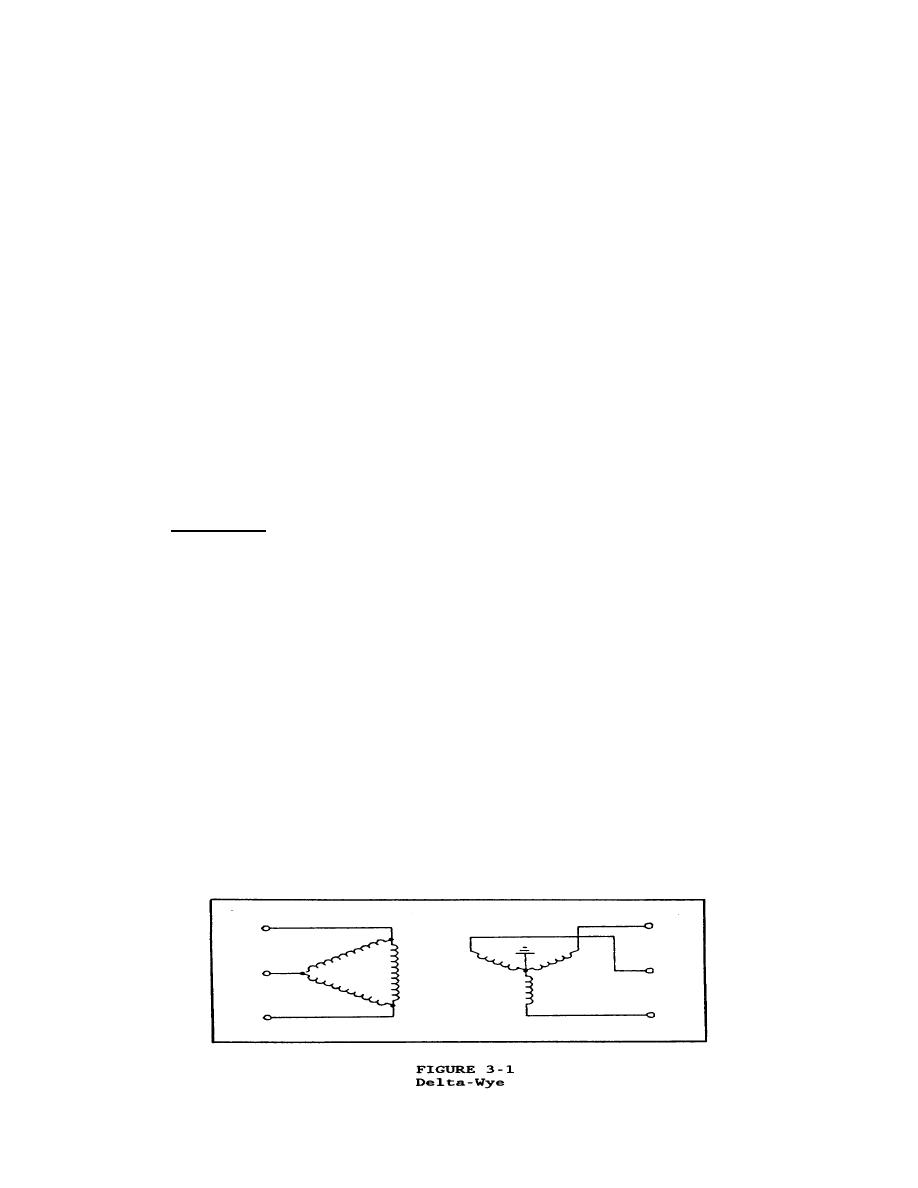

Custom Search
|
|

|
||
 currents. This relationship is an important factor in transformer engineering.
3.2.6.2 Voltage Taps. Voltage taps permit incremental changes in the ratio of the primary
to secondary voltage transformation. Voltage tap adjustments can be used to maintain a constant
secondary voltage despite changes in the primary voltage or secondary load currents.
(a) The most commonly selected tap arrangement is the manually adjustable no-load
type, consisting of four 2 1/2 percent steps or increments from the nominal primary voltage
rating. These tap positions are usually numbered 1 through 5, with the number 1 position
providing the greatest number of effective turns. With a constant incoming voltage, selecting a
higher voltage tap (lower tap number) will lower the output voltage. Tap positions can be
manually changed only when the transformer is removed from service.
(b) Load Ratio Control automatically adjusts the primary to secondary voltage ratio +/-
10 percent in incremental steps, and can be controlled by a voltage sensor at the transformer
secondary or at a remote location of the distribution system. Usually there are 32 (5/8 percent)
steps to enable close voltage control over the range of +/- 10 percent. Automatic tap changing is
accomplished by a voltage regulating relay and motor mechanism.
3.2.7 Connections. Standard 3-phase two-winding power transformers are connected in
various configurations. The transformers used in main substations and at other points in primary
distribution systems are typically Delta primary and Wye secondary. Other transformations, used
by the Navy, are the Wye-Delta, Wye-Wye, and Delta-Delta. Less commonly used
transformations, include the ZigZag, Open-Delta, Scott, and Six-Phase Star.
3.2.7.1 Delta-Wye. The Delta-Wye connection is shown in Figure 3-1. The wye
secondary with external neutral bushing provides a convenient neutral point for establishing a
system ground, or a neutral conductor for phase-to-neutral load. The delta-connected primary
the supply lines to improve the supply system voltage wave shape and to allow detection and
isolation of line-to-ground faults (zero-sequence currents is a significant factor in symmetrical
components analysis terminology). The delta connection may be used whether the primary is
connected to a three-wire or four-wire system. Principal applications of a Delta-Wye
connections are stepping down to supply a four wire load and stepping up to supply a
high-voltage distribution or transmission system.
|
 |
|
 |
||